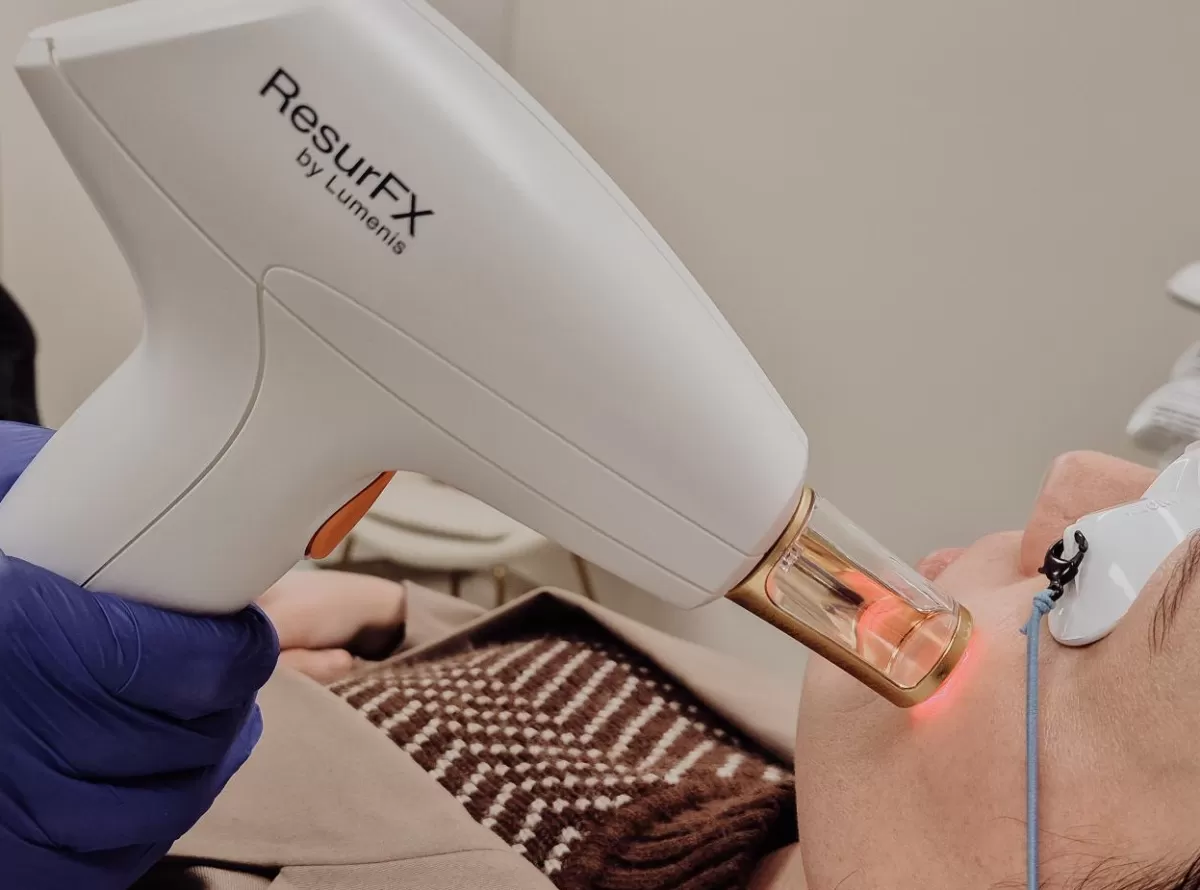Ablative vs. Non-Ablative Laser Resurfacing: Which One is Right for You?

Ablative vs. Non-Ablative Laser Resurfacing: Which One is Right for You?
Laser resurfacing is a popular and effective solution for various skin concerns, from wrinkles and fine lines to acne scars and sun damage. However, with two primary types of laser resurfacing available—ablative and non-ablative—it can be challenging to decide which one is right for you. This guide will help you understand the differences between ablative and non-ablative laser resurfacing, their benefits, and which option might best suit your skin needs.
What is Laser Resurfacing?
Laser resurfacing is a cosmetic procedure that uses laser technology to improve skin texture, tone, and overall appearance. The process involves directing concentrated beams of light at the skin to remove damaged layers and stimulate the production of new, healthy skin cells and collagen.
Understanding Ablative Laser Resurfacing
How Ablative Laser Resurfacing Works
Ablative lasers, such as CO2 and Erbium lasers, work by removing the outer layers of the skin. This process creates controlled micro-injuries that trigger the body’s natural healing response, promoting the production of new collagen and skin cells. Here’s how it works:
- Precision Removal: Ablative lasers precisely target and vaporize the outer layers of the skin.
- Collagen Stimulation: The removal of damaged skin cells and the controlled thermal injury stimulate the production of collagen, the protein responsible for skin elasticity and firmness.
Benefits of Ablative Laser Resurfacing
Ablative laser resurfacing offers several significant benefits, including:
- Dramatic Results: This treatment can significantly improve deep wrinkles, severe sun damage, and acne scars.
- Skin Texture Improvement: It effectively smooths and tightens the skin, reducing the appearance of large pores and rough texture.
- Even Skin Tone: Ablative lasers help reduce pigmentation issues, resulting in a more even skin tone.
Considerations for Ablative Laser Resurfacing
While ablative laser resurfacing is highly effective, there are some considerations to keep in mind:
- Downtime: The recovery period is longer, usually ranging from one to two weeks.
- Aftercare: Proper post-treatment care is essential to ensure optimal healing and results. Patients may experience redness, swelling, and peeling during the recovery phase.
Understanding Non-Ablative Laser Resurfacing
How Non-Ablative Laser Resurfacing Works
Non-ablative lasers penetrate the skin without removing the outer layers. They target the deeper layers to stimulate collagen production and promote natural skin regeneration. Here’s how it works:
- Controlled Heat Delivery: The laser delivers heat to the underlying skin tissue without damaging the surface, which triggers collagen remodelling and new cell growth.
- Fractional Approach: Non-ablative lasers can use a fractional approach, treating a fraction of the skin at a time, enhancing healing and reducing downtime.
Benefits of Non-Ablative Laser Resurfacing
Non-ablative laser resurfacing also offers several key benefits:
- Minimal Downtime: This treatment typically has minimal to no downtime, allowing patients to return to their normal activities almost immediately.
- Gradual Improvement: Results are achieved gradually over multiple sessions, with improvements in skin texture, tone, and overall appearance becoming more noticeable over time.
- Safety and Comfort: Non-ablative lasers are generally gentler on the skin, making them suitable for a broader range of skin types and tones.
Considerations for Non-Ablative Laser Resurfacing
While non-ablative laser resurfacing is a great option, consider the following:
- Multiple Sessions: To achieve optimal results, several treatment sessions are usually required, spaced weeks apart.
- Mild Side Effects: Patients may experience temporary redness, swelling, or mild discomfort following the treatment.
Choosing the Right Treatment for You
Deciding between ablative and non-ablative laser resurfacing depends on your specific skin concerns, lifestyle, and desired outcomes. Here are some factors to consider:
Severity of Skin Issues
- Ablative Laser Resurfacing: Ideal for deeper wrinkles, significant scarring, or extensive sun damage.
- Non-Ablative Laser Resurfacing: Suitable for milder skin concerns, such as fine lines and slight texture irregularities.
Downtime Availability
- Ablative Laser Resurfacing: Requires a longer recovery period, making it a better option if you can afford some downtime.
- Non-Ablative Laser Resurfacing: Minimal downtime makes it convenient for those with busy schedules.
Skin Type and Tone
- Ablative Laser Resurfacing: Suitable for lighter skin tones due to the risk of pigmentation changes in darker skin tones.
- Non-Ablative Laser Resurfacing: Generally safe for a broader range of skin types and tones.
Summary
Both ablative and non-ablative laser resurfacing offer powerful solutions for rejuvenating and revitalizing the skin. By understanding the basics of each technology, you can work with our medical professionals to develop a customized treatment plan that addresses your specific needs and helps you achieve your desired results.
For more information or to schedule a consultation, contact our clinic today. Our experienced professionals are here to guide you through your skin journey and help you achieve the radiant skin you deserve.


